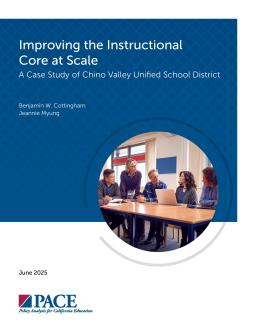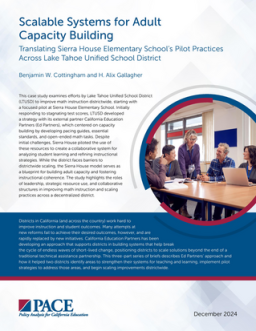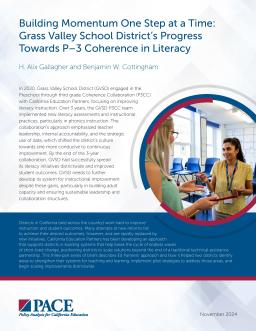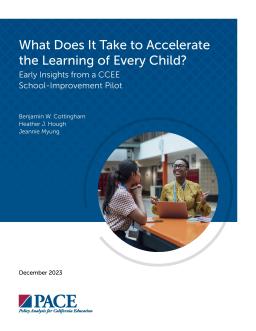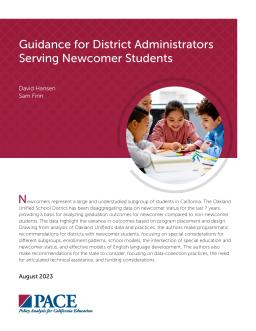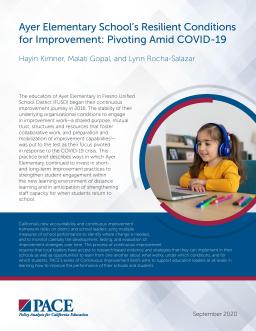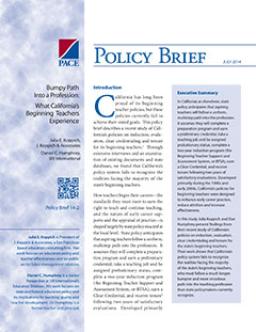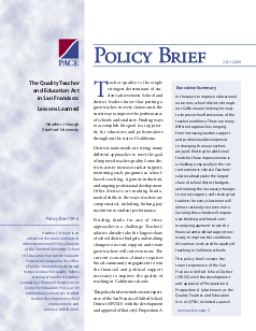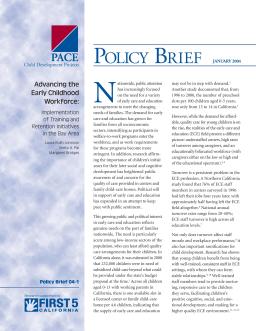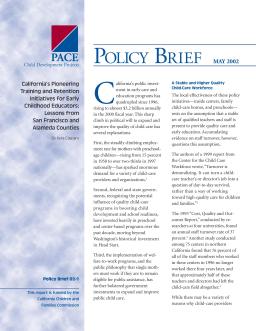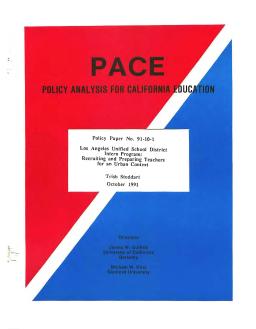A Case Study of Chino Valley Unified School District
Published
Summary
This case study examines how Chino Valley Unified School District scaled the Professional Learning Community (PLC) at Work model across all schools to strengthen teacher collaboration, leadership, and use of student data. Over eight years, the district built coherent systems—scheduled collaboration time, coaching, and consistent leadership—while partnering with the teachers’ union to sustain focus despite COVID-19 and political challenges. Guided by framework for scaling effective practice, CVUSD institutionalized continuous improvement, contributing to notable gains in student achievement.
Translating Sierra House Elementary School’s Pilot Practices Across Lake Tahoe Unified School District
Published
Summary
This case study explores how Lake Tahoe Unified School District worked to improve math instruction, starting a pilot at Sierra House Elementary School. Partnering with California Education Partners, LTUSD addressed stagnant test scores by developing pacing guides, essential standards, and open-ended math tasks. Sierra House used these tools to create a collaborative system for analyzing student learning and refining instruction. While scaling districtwide remains a challenge, the Sierra House model highlights leadership and resource use with collaboration in advancing instructional coherence.
Grass Valley School District’s Progress Towards P–3 Coherence in Literacy
Published
Summary
Grass Valley School District (GVSD) partnered with California Education Partners through an initiative to improve literacy instruction. Over three years, GVSD implemented new literacy assessments and phonics practices, emphasizing teacher leadership, data use, and accountability. That shifted the district’s culture toward continuous improvement, enabling districtwide adoption of literacy initiatives and improved student outcomes. This case study highlights the need for stronger systems to build adult capacity and sustain leadership and collaboration.
Early Insights from a CCEE School-Improvement Pilot
Published
Summary
Student achievement in California has not rebounded after the precipitous declines of the COVID-19 pandemic, with English language arts (ELA) and math scores remaining well below prepandemic levels. Student attendance has declined dramatically, and trauma and time away from school have led to mental health challenges, delays in social development, and behavioral issues among students. All too often, teachers work in isolation to create lesson plans and deliver instruction, with little instructional support, limited opportunities for collaboration, and unclear expectations.
Published
Summary
Newcomers represent a large and understudied subgroup of students in California. The Oakland Unified School District has been disaggregating data on newcomer status for the last 7 years, providing a basis for analyzing graduation outcomes for newcomer compared to non-newcomer students. The data highlight the variance in outcomes based on program placement and design. Drawing from analysis of Oakland Unified’s data and practices, the authors make programmatic recommendations for districts with newcomer students.
Pivoting Amid COVID-19
Published
Summary
This brief outlines Ayer Elementary's journey of continuous improvement since 2016 and how their organizational conditions were tested during the COVID-19 crisis. Despite the challenges, the school invested in improvement practices to strengthen student engagement in distance learning and build staff capacity for when students return to school.
What California's Beginning Teachers Experience
Published
Summary
California's policies for beginning teachers assume a uniform path of completing a preparation program, BTSA, earning a Clear Credential and tenure. However, a recent study shows that the policies fail to recognize the reality of a longer, bumpier and more circuitous path faced by the majority of beginning teachers.
Lessons Learned
Published
Summary
This policy brief examines the recent development and approval of Proposition A in the San Francisco Unified School District, which included a parcel tax for increasing teacher salaries, introducing flexibility to the salary schedule, and strengthening accountability for teacher performance. The author describes how the district and union worked together to increase compensation and align school district goals with teacher salaries.
Implementation of Training and Retention Initiatives in the Bay Area
Published
Summary
The early care and education (ECE) profession faces staffing problems due to understaffed centers, high turnover rates, and an educationally bifurcated workforce. To mitigate this issue, programs like the California Childcare Retention Incentive (CRI) provide monetary stipends to ECE professionals who meet tenure and education requirements. This policy brief summarizes findings from a two-year evaluation of CRI programs in Alameda and San Francisco counties, focusing on themes relevant to Year 2 implementation.
Lessons from San Francisco and Alameda Counties
Published
Summary
The policy brief discusses the reasons behind California's increase in public investment in early care and education programs, including the rising demand for childcare, recognition of the potential benefits for child development and school readiness, and the implementation of welfare-to-work programs with results and insights from both San Francisco and Alameda Counties.
Published
Summary
A study conducted for the Los Angeles County Department of Public Social Services aimed to determine the supply and demand of licensed childcare in the county, with a focus on low-income communities and special types of care. The survey analyzed data at three levels: county-wide, service planning areas, and supervisorial districts. Results showed disparities in childcare supply across the county, with shortages in special types of care and little information on where childcare is needed.
Recruiting and Preparing Teachers for an Urban Context
Published
Summary
Traditional teacher recruitment fails to meet urban area and high-demand subject needs. Alternative certification programs offer a solution but are criticized for being a "quick fix". The LAUSD Intern Program case study addresses questions on effectiveness and preparation of alternative-certified teachers. On-the-job training is context-specific and not a replacement for college-based education.
Recruiting and Preparing Teachers for an Urban Context
Published
Summary
This article discusses the criticism of alternative routes to teaching, which are seen as inadequate and leading to declining instructional quality, but are attempting to address the shortage of qualified teachers in urban and high demand subject areas. Supporters argue that they are effective in recruiting competent teachers for hard-to-staff schools and replacing the emergency credential system with rigorous training. The article highlights the impact of teacher shortages on inner city and minority students who are currently being educated by marginally qualified teachers.
